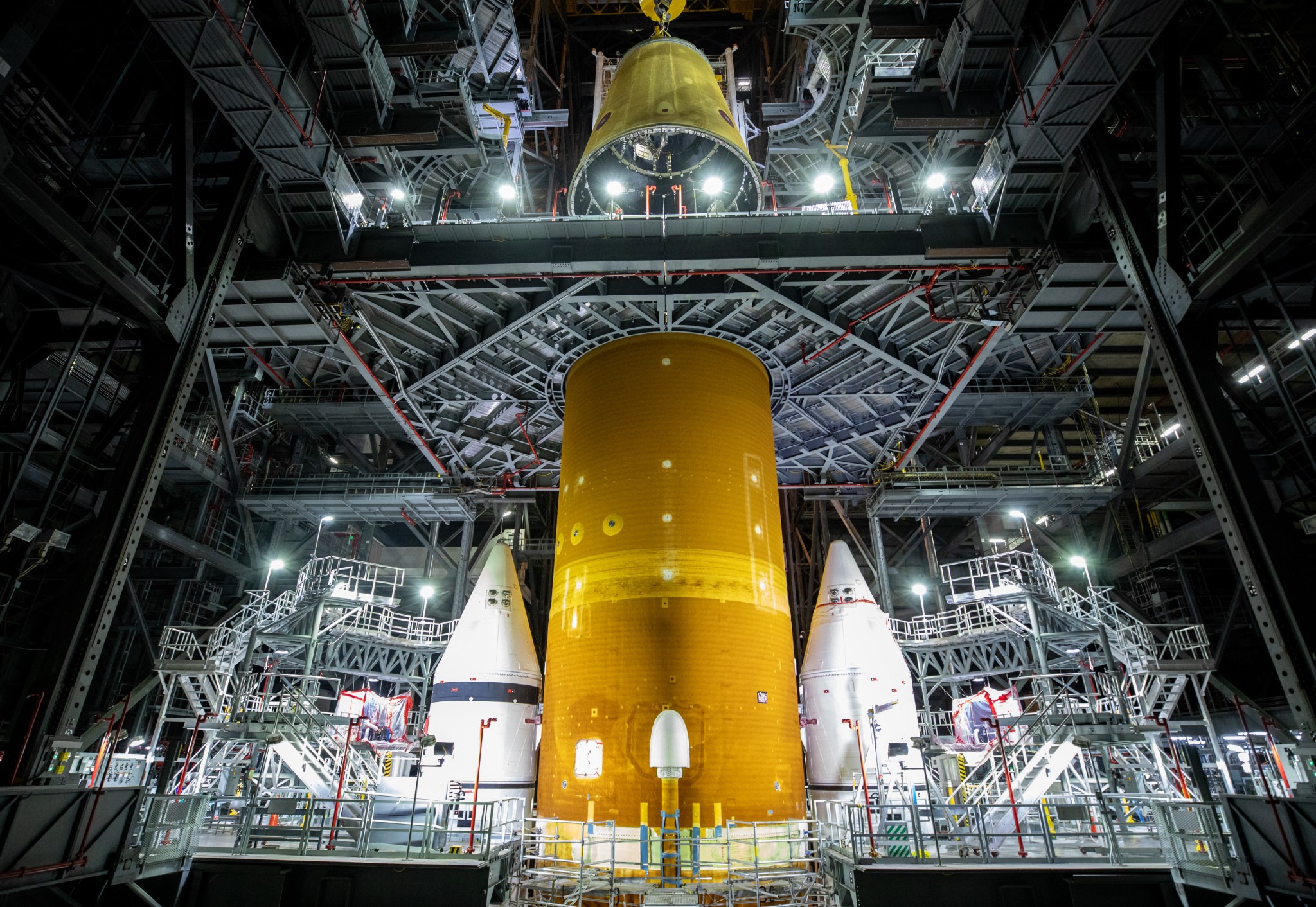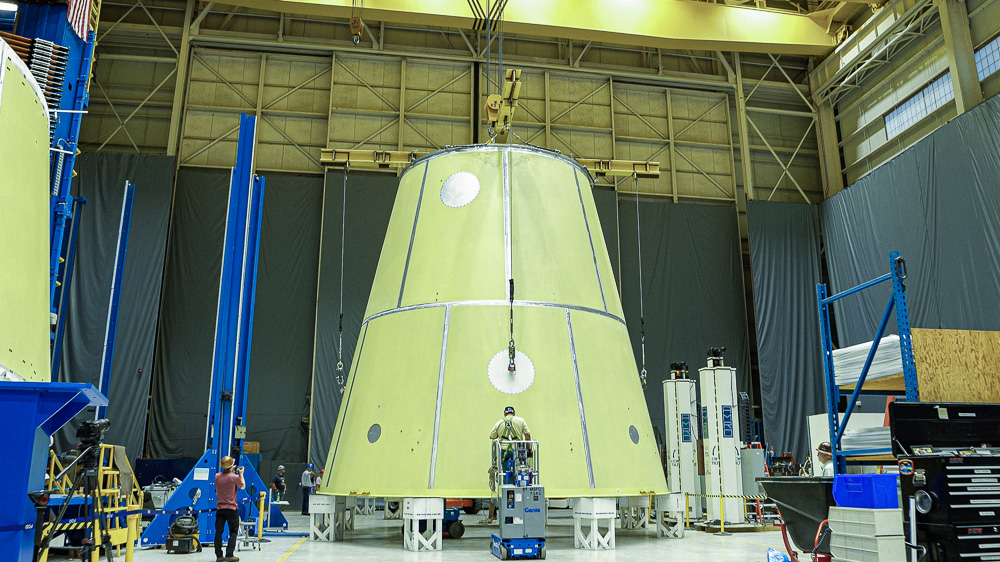The launch vehicle stage adapters (LVSA) of NASA’s Space Launch System (SLS) rocket for the Artemis I and Artemis II lunar missions continue to progress through assembly and integration. Crews with NASA’s Exploration Ground Systems and contractor Jacobs stacked the launch vehicle stage adapter atop the core stage June 22 at the agency’s Kennedy Space Center in Florida for the Artemis I mission, the first integrated flight test of SLS and NASA’s Orion spacecraft. The 30-foot-tall, cone-shaped piece of hardware connects the SLS rocket’s upper and lower propulsion stages. The adapter also houses the RL10 engine that powers the Interim Cryogenic Propulsion Stage that will send Orion on a precise trajectory to the Moon.
Meanwhile, teams at NASA’s Marshall Space Flight Center in Huntsville, Alabama, recently completed welding the launch vehicle stage adapter for Artemis II, the first flight with astronauts. Teams moved the Artemis II launch vehicle stage adapter to another area of the Marshall facility to finish outfitting and assembly. The LVSA flight hardware is produced exclusively at Marshall by Teledyne Brown Engineering in Huntsville.
With Artemis, NASA will land the first woman and the first person of color on the Moon in preparation for missions to Mars. SLS and the Orion spacecraft, along with the commercial human landing system and the Gateway in orbit around the Moon, are NASA’s backbone for deep space exploration. SLS is the only rocket that can send Orion, astronauts, and supplies to the Moon in a single mission. (NASA)





























